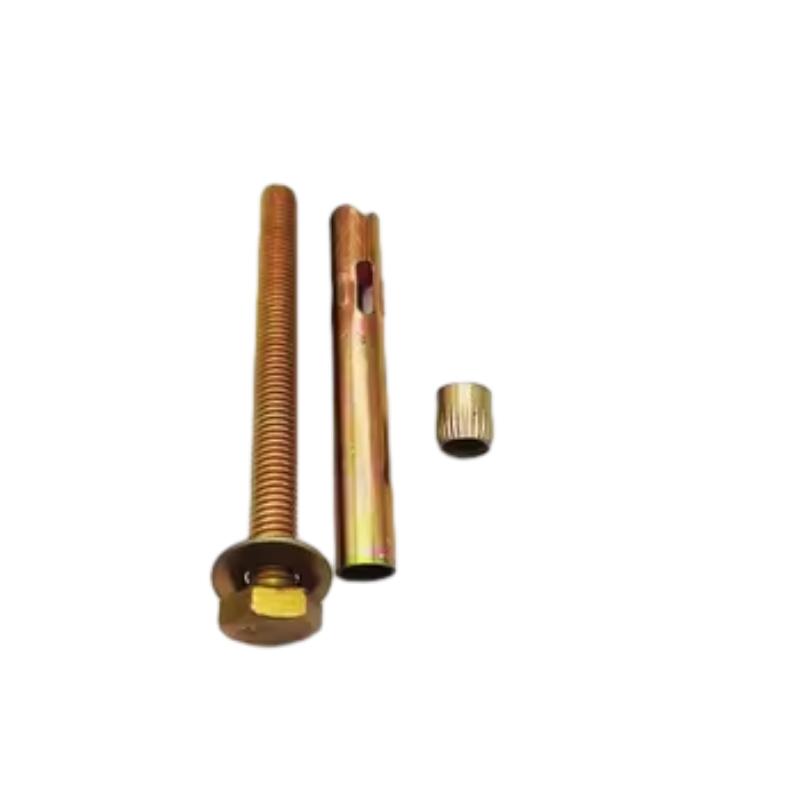Jul . 30, 2024 05:01 Back to list
Detailed Specifications and Measurements for M8 Anchor Bolt Dimensions and Applications in Construction
Understanding M8 Anchor Bolt Dimensions
In the realm of construction and engineering, anchor bolts serve as crucial components that provide foundation support and stability for various structures. Among the various types of anchor bolts, the M8 anchor bolt is widely used due to its versatility and strength. The designation M8 refers to the metric size of the bolt, specifically indicating a nominal diameter of 8 millimeters. This article delves into the dimensions, specifications, and practical applications of M8 anchor bolts, providing a comprehensive understanding for contractors, engineers, and DIY enthusiasts alike.
Dimensions and Specifications
The M8 anchor bolt typically comes in a range of lengths, with common options including 50mm, 75mm, 100mm, and 150mm. The selection of length is crucial as it must accommodate the thickness of the material being anchored and provide adequate embedment for stability. In addition to length, the diameter of the bolt is consistent at 8mm, while the thread pitch usually measures at 1.25mm for standard specifications.
When it comes to the head of the M8 anchor bolt, it usually features a hexagonal shape, allowing for secure tightening using standard tools like a wrench. The various grades of M8 bolts are designed to offer different levels of tensile strength; for example, standard M8 bolts are often available in grades like 4.6, 8.8, and higher, where the first number indicates the yield strength and the second number indicates the ultimate tensile strength.
Materials and Surface Treatments
M8 anchor bolts can be manufactured from various materials, including carbon steel, stainless steel, and even high-strength alloys. While carbon steel is often used due to its cost-effectiveness, stainless steel is favored for outdoor applications or environments prone to corrosion. Moreover, surface treatments such as galvanization or powder coating can enhance corrosion resistance and durability, making the M8 anchor bolt suitable for various environmental conditions.
m8 anchor bolt dimensions

Installation and Application
Proper installation techniques are critical for maximizing the effectiveness of M8 anchor bolts. They can be installed in concrete, masonry, or other structural materials, often requiring pre-drilled holes. For concrete applications, expansion anchor bolts or chemical anchors may be employed to secure the M8 bolts, providing an added layer of strength.
M8 anchor bolts are widely used in different applications, including securing machinery, structural steel frameworks, and even in the assembly of prefabricated components. They are prevalent in construction sites, industrial settings, and infrastructure projects due to their reliable load-bearing capabilities.
Load Capacity and Considerations
The load capacity of an M8 anchor bolt depends on several factors, including the quality of the material, the method of installation, and the nature of the load (tension or shear). As a rule of thumb, it is essential to consult engineering guidelines or relevant codes to determine the appropriate load limits for M8 anchors in specific applications. Overloading the anchor can lead to failure, risking structural integrity.
Conclusion
M8 anchor bolts are integral to modern construction and engineering, offering a blend of strength, versatility, and ease of use. Their standardized dimensions and availability in various materials make them a go-to choice for many professionals. Whether you are anchoring a piece of machinery or securing structural components, understanding the dimensions and specifications of M8 anchor bolts will ensure that you make informed decisions for your projects. Proper selection, installation, and adherence to load capacity guidelines are crucial to ensure safety and stability in any application involving M8 anchor bolts.


